
The Rise and Fall of the Neoliberal Order: America and the World in the Free Market Era
by
Gary Gerstle
Published 14 Oct 2022
See also Randall Rothenberg, The Neoliberals: Creating the New American Politics (New York: Simon and Schuster, 1984); Corey Robin, “The First Neoliberals,” Jacobin, April 28, 2016, https://www.jacobinmag.com/2016/04/chait-neoliberal-new-inquiry-democrats-socialism/, accessed August 1, 2021; and Brent Cebul, “Supply-Side Liberalism: Fiscal Crisis, Post-Industrial Policy, and the Rise of the New Democrats,” Modern American History 2 (July 2019), 139–164. 60.They ought “not to be confused,” Lekachman added, “with traditional, highly honorable liberal aspirations for full employment, universal health coverage, tax equity, adequate housing, urban rehabilitation, integration of minorities into the labor force, and the mild redistribution of income, wealth and power.” Robert Lekachman, “Atari Democrats,” New York Times, October 10, 1982, https://www.nytimes.com/1982/10/10/opinion/atari-democrats.html, accessed July 26, 2021. 61.Paul E. Tsongas, “Atarizing Reagan,” New York Times, March 1, 1983, https://www.nytimes.com/1983/03/01/opinion/atarizing-reagan.html, accessed July 26, 2021. 62.Leslie Wayne, “Designing a New Economics for the ‘Atari Democrats,’ ” New York Times, September 26, 1982, https://www.nytimes.com/1982/09/26/business/designing-a-new-economics-for-the-atari-democrats.xhtml, accessed March 20, 2019. 63.For a transcript of the “New Orleans Declaration,” see “Repost: The Manifesto of the Third Way Democrats—the New Orleans Declaration,” abiasedperspective, Luke Phillips Blog, https://abiasedperspective.wordpress.com/2015/04/07/repost-the-manifesto-of-the-third-way-democrats-the-new-orleans-declaration/, accessed April 2, 2020.
…
But the neo-Victorian moral code was dominant within the Republican Party, the institution most responsible for the neoliberal order’s 1980s ascent.57 Democratic Acquiescence and Resistance By the mid-1980s, Reagan’s new political order was already bending Democrats to its will, much as the New Deal order had corralled Eisenhower and other Republicans in the 1950s. Calls for reorienting the Democratic Party toward free market ideology that had first appeared during Jimmy Carter’s presidency intensified across the 1980s. Self-styled “Atari Democrats” were among the vanguard of Democrats arguing that their party had to reorient. They regarded information technology industries as the future and were alarmed that the United States might cede its advantages in this critical economic sector to the Japanese (Atari was then a leading Japanese manufacturer of video games).
…
With Lester Thurow, an economist at MIT, and other university-based social scientists, they began to gain a toehold in academia.62 When Walter Mondale, a traditional New Deal liberal (and disciple of New Deal standard-bearer Hubert Humphrey) lost by a wide margin to Reagan in the presidential election of 1984, the Atari Democrats joined a larger group of frustrated Democratic officials to found the Democratic Leadership Council (DLC). The DLC’s intent was to put distance between the 1980s Democratic Party and its 1930s and 1960s forebears by looking favorably on business, free markets, and high tech. Losing the presidency in 1988 (when George H.

The Code: Silicon Valley and the Remaking of America
by
Margaret O'Mara
Published 8 Jul 2019
Stark wasn’t an Atari Democrat in the least. The California congressman from the East Bay was a staunch liberal, quick to criticize what he saw as the pretensions of the new breed. “Tim Wirth talking about economics is preposterous,” he scoffed, “and Gary Hart is saying the same thing Ronald Reagan is.” Yet Stark was quite literally closer than most in Congress to the center of the high-tech world: his East Bay district was next door to Silicon Valley. Plus, he was a subcommittee chairman on the tax-writing House Ways and Means Committee, giving him power that few Atari Democrats could match. Those two things brought Steve Jobs into Stark’s orbit in early 1982, making a pitch for a new tax break.
…
But it was hard to get traction in the middle of the Reagan Revolution, no matter how many Atari Democrats popped up on Capitol Hill. Jobs’s misadventures with the Apple Bill hadn’t helped. And having “Silicon Valley’s Congressman” hard at work in D.C. made little difference to McKenna. He and Ed Zschau had very little patience for one another, both being strong partisans with very different ideas about what Washington needed to do to support the tech industry. * * * — So whatever happened to industrial policy? Jerry Brown pushed it; Atari Democrats couldn’t stop yapping about it. Republicans like Ed Zschau could barely stand the idea, even while agreeing that something had to change.
…
Success had come from the sharp-elbowed, inwardly-focused pursuit of building better products faster than the guy down the hall or down the street. The Valley wasn’t ready to be a model for the rest of the world. “If this area has that much influence on our ideologies and our philosophies and our way of life,” one resident remarked as Election Day 1980 neared, “God help us.”2 ATARI DEMOCRATS The same August that Apple fever seized Wall Street, pinstriped stockbrokers flipping through The Wall Street Journal on the morning commuter train would have encountered a front-page article about Colorado Democrat Gary Hart, who was running for reelection to a second term in the U.S. Senate.

Listen, Liberal: Or, What Ever Happened to the Party of the People?
by
Thomas Frank
Published 15 Mar 2016
Hart became a symbol of the Sixties generation’s revolt against the workerist politics of their parents. “The End of the New Deal” was the title of Hart’s standard 1974 campaign speech; he liked to mock old-school libs as “Eleanor Roosevelt Democrats.” Later on, Hart would lead the technology-minded politicians the media nicknamed the “Atari Democrats”; his 1984 run for the Democratic presidential nomination was celebrated as a blow against the New Deal past. It was also the occasion for the media’s discovery of the affluent and tasteful “yuppie”—the “Young Urban Professional” whose rise was supposed to signal yet another break from the Democrats’ traditional blue-collar demographic.9 The Jimmy Carter presidency was an earlier milestone.
…
ABInBev Ackman, William Affordable Care Act “Obamacare” (2009) Afghanistan AFL/CIO Agenda, The (Woodward) Aid to Families with Dependent Children (AFDC) AIG Airbnb Alexander, Michelle Allen, George Allen, Paul All in the Family (TV show) Alter, Jonathan Altman, Roger Amazon American Prospect America: What Went Wrong (Barlett and Steele) Ameriquest Andreessen, Marc antitrust Apple, Inc. Archer Daniels Midland Argentière Capital Arnold, Thurman Atari Democrats Audacity of Hope, The (Obama) Austin, Texas Bai, Matt bailouts Bain Capital Baird, Zoë Balz, Dan banks. See also investment banks; Wall Street bailout of Bill Clinton and blue states and deregulation of Hillary Clinton and McCain and microlending and mortgage crisis and Obama and subprime lending and too big to jail Barkan, Al Barofsky, Neil Bateman, Milford Baucus, Max Begala, Paul Bell, Daniel Benton, Thomas Hart Bernanke, Ben Bernstein, Carl Beta Boston Bezos, Jeff Biden, Joe Biewald, Lukas big data Bill & Melinda Gates Foundation bipartisan consensus Black Lives Matter Blueprint blue states Blumenthal, Sidney Bono Born, Brooksley Bosnia Boston Globe Boston University Bowles, Erskine Bowles-Simpson Commission Breuer, Lanny Brint, Steven Brock, David Brooks, Clem Brooks, David Brown, John Bruni, Frank Bryan, William Jennings Bukowski, Charles Bull Run (Gross) Bush, George H.

Road to Nowhere: What Silicon Valley Gets Wrong About the Future of Transportation
by
Paris Marx
Published 4 Jul 2022
They were often established with some public funding, but they were limited by the NSFNET’s Acceptable Use Policy that, at least officially, barred commercial traffic from the network. However, companies seeking to cash in on this evolving network infrastructure had influence over NSF decisions and the ears of powerful political figures. Senator Al Gore was among the prominent members of the group of “Atari Democrats” who believed US high-tech industries would generate economic growth and enhance the country’s global influence. When he introduced the National High-Performance Computer Technology Act in 1989, he argued, “The nation which most completely assimilates high-performance computing into its economy will very likely emerge as the dominant intellectual, economic, and technological force in the next century.”20 Gore was not only interested in domestic power, but explicitly positioned the emerging internet as a means to oppose communism while extending US power into the post-Soviet states and encouraging the privatization of telecommunications networks around the world.21 In service of the goals outlined by Gore, President Clinton’s administration moved forward with a plan to transfer control of the internet to private companies because it was “anticipated that the commercialization of activity over the Internet would be conditional on first achieving the privatization of the infrastructure.”22 By 1995, the NSFNET was decommissioned and sold off to private companies.
…
Index Abbott, Greg, 70 Acceptable Use Policy, 51 Ackerman, Emily, 173–4 Advanced Research Projects Agency (ARPA), 39, 50, 54–5 Advanced Research Projects Agency Network (ARPANET), 50 Advanced Technologies Group (ATG), 133, 134–5 Airbnb, 181 Airbus, 152 air pollution, 84, 231 algorithms, 194–8 Allison, Eric, 153 Alphabet, 228 Amazon, 105–6, 181, 184, 200–1, 231 Amazon Go/Fresh, 194–5 American Motor Company, 68 Americans with Disabilities Act (ADA), 100, 156, 174 Amsterdam, 205 Anthony, Susan B., 160 Anthony’s Robots, 121 Apple Computer, 36, 55, 72, 181, 230–1 Arizona Department of Transportation, 135–6 Assembly Bill 5 (California), 111 Association of Electric Vehicle Manufacturers, 66–7 Atari Democrats, 51 Australia, lithium and mining in, 75–6, 80 automobiles autonomous (See self-driving cars) change in traffic during Covid-19, 231 city planners’ perspectives on, 214 compared with personal computers, 36–7 death toll from, 3–4, 16–7 dependence on, 3 disruption of mobility by, 9–35 expansion of ownership of, 15 flying cars, 151–2, 159 safety in automotive industry, 27–8 size of, 34 transformation of, 124–5 automobility.

Boom: Bubbles and the End of Stagnation
by
Byrne Hobart
and
Tobias Huber
Published 29 Oct 2024
All of these people need to participate in the bubble at the same time, and FOMO can bring them together. The coordinating effect of FOMO applies to governments and the media as well. If you can’t participate in a boom directly, you can always try to enable it, whether through good press or beneficial regulation. In the 1980s and 1990s, a group of technology boosters in Congress was dubbed the “Atari Democrats”—a mildly pejorative nickname, given that Atari had been an expensive failure after its promising early years. But the politicians embraced the label, strongly signaling they believed in what it signified. They were prescient. That FOMO arises during bubbles is an acknowledgment that bubbles are one-off events.
…
Part of the significance of Facebook’s rebranding as Meta Platforms is that the company is committed to ruling the next platform it runs on. Likewise, regulations and narratives can be seen as filter bubbles subject to self-reinforcing dynamics, reflecting the perception that there is only one chance to get things right. In the 1990s, some of the Atari Democrats persuaded their colleagues to give internet companies a safe harbor in the form of Section 230, which protected them from any liabilities related to content users posted on their sites. The provision made the internet something closer to an open forum than a traditional media operation that happened to be accessible via modems.
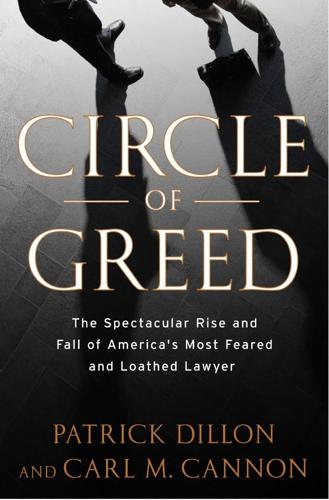
Circle of Greed: The Spectacular Rise and Fall of the Lawyer Who Brought Corporate America to Its Knees
by
Patrick Dillon
and
Carl M. Cannon
Published 2 Mar 2010
For sixteen years as a venture capitalist and entrepreneur, he personally helped shape the Silicon Valley, betting on emergent companies such as Intuit, Netscape, Amazon, and Sun Micro systems. From the outset of the information age, prominent Democrats hoped the moguls of these new industries would gravitate toward their party. The politicians trying to woo the techies called themselves Atari Democrats, after the company that invented Pong, one of the first video games. “We prefer Apple Democrats,” quipped tech-friendly Colorado congressman Timothy Wirth. “It sounds more American.” Atari was a Japanese word (although a California company), but Apple Computer would indeed have been a better symbol because Apple CEO Steve Jobs was a liberal Democrat who in 1996 gave $100,000 to the Clinton campaign.
…
Doerr craved that kind of clout for his industry, and several young Democrats arrived on the scene about this time to help Doerr achieve his goal. One was a Californian from a moneyed family named Wade Randlett, who had an Ivy League education, a law degree, and a passion for politics. Randlett believed he could make a name for himself—and do the Democratic Party a lot of good—by making the Atari Democrats’ long-standing dream come true. At age thirty-one, Randlett had established himself as one of the top “bundlers” in the Democratic Party. (Bundlers raise large amounts of cash for the party, by getting dozens—or hundreds—of donors with similar interests to write checks that are then given in one large tranche to the party, or to a specific candidate.)
…
In early 2009, his fiction of being a Republican long since retired, Doerr would be introduced at the White House by President Obama as a member of the president’s Economic Recovery Advisory Board. On a bigger canvas, Proposition 211 did more in one fell swoop than all the position papers the Atari Democrats had ever put together. Never again would Silicon Valley be caught off guard in politics—and never again would its denizens be taken for granted by either political party. “A sleeping giant has been awakened,” Doerr’s partner Brook Byers said. Bill Lockyer, a California Democratic official with statewide ambitions, used identical imagery, as did influential California Republican Dan Schnur.
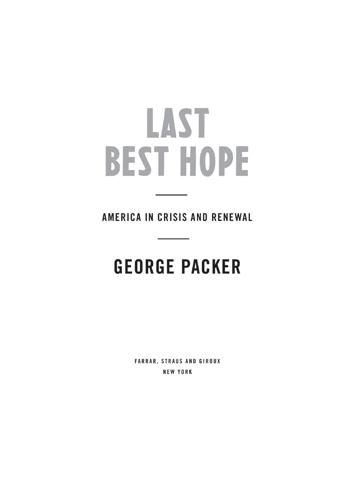
Last Best Hope: America in Crisis and Renewal
by
George Packer
Published 14 Jun 2021
After the McGovern convention in 1972, the Democratic Party became the home of educated professionals, racial minorities, and the shrinking unionized working class. The more the party identified with the winners of the new economy, the easier it became for the Republican Party to pull away white workers by appealing to cultural values. In the 1980s Gary Hart (who had labored on the Kansas railroads as a boy) became the leader of the tech-minded “Atari Democrats.” In the early 1990s Bill Clinton (from a dirt-poor Arkansas watermelon patch called Hope) used his chairmanship of the centrist Democratic Leadership Council as a launchpad for the presidency. Even though Clinton sounded like an Ozark populist, old-fashioned class politics was foreign to him.
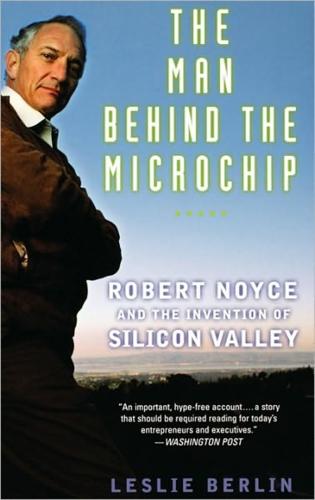
The Man Behind the Microchip: Robert Noyce and the Invention of Silicon Valley
by
Leslie Berlin
Published 9 Jun 2005
A select committee of prominent Democrats—including businessmen, labor leaders, and Senators—formed a special “Industrial Policy Study Group,” and one group of young Democrats, led by Gary Hart, Tim Wirth, and Michael Dukakis, pushed so hard for high-tech industries to be the focus of the party’s industrial policies that the young men came to be known as “Atari Democrats.” In Sacramento, Governor Jerry Brown established and chaired a California Commission on Industrial Innovation. Charlie Sporck, along with Apple Computer’s Steve Jobs, served on Brown’s commission, but Noyce declined to join, despite multiple requests from the governor himself.27 High-tech executives were highly sought for these committees because the politicians believed information-based technologies represented the nation’s economic future.
…
Although Noyce freely admitted behind closed doors at an SIA conference that “we are attempting to influence our national strategy,” the organization was in a delicate situation. The SIA had to encourage President Reagan to consider actions that on first blush appeared departures from his much-ballyhooed free market, small government ideals and more in line with some of the Atari Democrats’ calls for industrial policy. At the same time, the SIA had to convince Democrats to support the semiconductor industry—perhaps over the heavy industries that employed many members of the Democrats’ most reliable constituencies.29 The SIA also needed to take into account the semiconductor industry’s reputation as the last bastion of do-it-yourself, up-by-the-bootstraps American individualism—exemplars of treasured American values, and the polar opposite of the Japanese.

What's the Matter with White People
by
Joan Walsh
Published 19 Jul 2012
That year, unions represented less than a quarter of total PAC spending, down from half in 1974, according to Jacob Hacker and Paul Pierson in Winner Take All Politics. Labor’s influence with the Democratic Party showed a corresponding decline. Some of it was fallout from the 1972 battle between Meany and “new politics” liberals; McGovern’s campaign manager, Gary Hart, would pioneer the idea of “New Democrats”—and later, “Atari Democrats”—who owed no allegiance to labor. When he ran for the Senate in 1974, Hart declared that “labor can’t deliver votes anymore” and called for a less intrusive and bureaucratic federal government. That same year, he proclaimed that his new generation of Democrats was not just “a bunch of little Hubert Humphreys,” deriding the longtime champion of organized labor and civil rights.
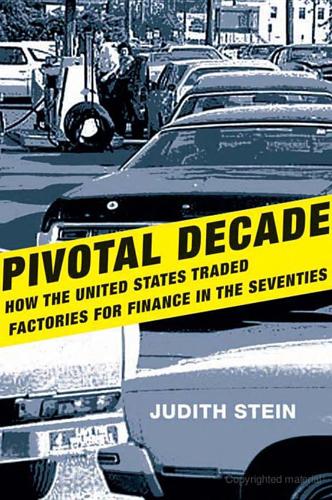
Pivotal Decade: How the United States Traded Factories for Finance in the Seventies
by
Judith Stein
Published 30 Apr 2010
If that’s the alternative we offer, I tell you we will meet the same fate in 1984 that we met in 1980.”44 Senator Gary Hart of Colorado told steel-workers in Youngstown, Ohio, “The Carter-Mondale administration had four years to put this industry back on its feet and it didn’t do so.”45 Hart was disingenuous. He was right about Carter’s failings and wanted to marry Mondale to them. But Hart represented the wing of the party that opposed an industrial policy for steel, believing that the future lay in new, postindustrial sectors. These so-called Atari Democrats, named for a video game manufacturer, championed free markets and high tech to create jobs and prosperity. Democratic elites attacked Reagan’s budget deficits. They voiced the opinions of economists and affluent Democrats, those uninjured by Reagan’s policies. Mondale had been with these “new realists” until the recession of 1982 convinced him to return to New Deal politics.

The Contrarian: Peter Thiel and Silicon Valley's Pursuit of Power
by
Max Chafkin
Published 14 Sep 2021
This was the techno-futurism of Wired magazine—a fusion of the personal freedom of Summer of Love‒era Haight-Ashbury and the don’t-tread-on-me spirit that had defined Californian politics since the days of David Starr Jordan. Thiel, then, was an outlier, in both his renewed vigor for politics and his separation from the squishy “Atari Democrats” like Gore. He’d been immersing himself in neoconservative thinking, reading Carl Schmitt, the conservative philosopher (and Nazi legal scholar) who is sometimes credited with inspiring the expansion of executive powers under George W. Bush, and Leo Strauss, the German Jewish University of Chicago political science professor who’d argued that the West had lost its way as it had embraced liberal values.

Evil Geniuses: The Unmaking of America: A Recent History
by
Kurt Andersen
Published 14 Sep 2020
I was pleased when he ran a close second in Iowa, finished first in New Hampshire a week later, and after that won a majority of states. I remember being in a Des Moines hotel room covering the Democratic caucuses for Time, feeling so state-of-the-art to be filing a story about Hart, a so-called Atari Democrat, through a twenty-eight-pound portable computer connected to a shoebox-size dial-up modem to which we’d docked a curly-corded desktop telephone handset. Just a few weeks earlier, in January 1984, Apple had introduced the Macintosh. Its famous Super Bowl ad, based on George Orwell’s Nineteen Eighty-four, featured a heroine smashing the tyrants’ huge telescreen, a lone nonconformist underdog spectacularly defying the oppressive Establishment.

Troublemakers: Silicon Valley's Coming of Age
by
Leslie Berlin
Published 7 Nov 2017
In 1978, Congress slashed the capital gains rate from 49 percent to 28 percent and eased the “prudent man” rules that had restricted pension funds’ abilities to invest with venture capitalists.I Within a year, venture capitalists had more than a half-billion new dollars to invest, and pension funds, universities, and other institutions across the country had begun experimenting with placing small amounts of money with venture capital firms.7 The Wall Street Journal editorial board wrote that a “counter-revolution taking place in American politics” was leaving big business “powerless.”8 California governor Jerry Brown established and chaired a California Commission on Industrial Innovation; members included David Packard, Steve Jobs, and Charlie Sporck of National Semiconductor, as well as the dean of the Stanford business school.9 California’s 1982 budget supported establishment of computer centers and a software clearinghouse, and also set aside $25 million for math, science, and technical education. In Washington, some Democrats, led by Gary Hart, Tim Wirth, and Michael Dukakis, were such outspoken advocates for entrepreneurial high-tech industry that they were collectively known as “Atari Democrats.” For the first time in decades, the White House hosted a conference on small business. President Reagan established a Commission on Industrial Competitiveness chaired by Hewlett-Packard chairman John Young. The groundwork had been laid for today’s tight connections between Silicon Valley and Washington.10 The Silicon Valley story—a tale of risk-taking upstarts whose willingness to explore new territories brings progress and huge financial rewards—had updated a beloved American story for the high-tech era.
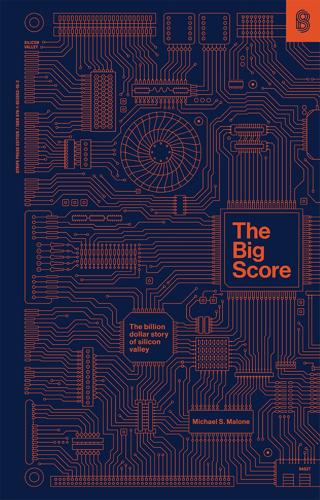
The Big Score
by
Michael S. Malone
Published 20 Jul 2021
And imitators spawned imitators; in this case, Imagic, another Atari-compatible software firm. Disney made Tron, a movie that was in essence a giant video game. 1982 was also the year of the big corporate mergers, and, fittingly, these became known as Pac-Man mergers. A group of liberal congressmen with rather blue-sky ideas about revitalizing the American economy became known as Atari Democrats. At Atari, things had never seemed rosier. The company raced to $2 billion in sales and $320 million in profits. The company’s third wing of attack, home computers, after a shaky start, moved out strongly by placing a great emphasis in their design on game-playing. It seemed a reasonable strategy: integrate all three wings of the company to create a continuous development path for the consumer from arcade games to home games to the added features available with a home computer.

Palo Alto: A History of California, Capitalism, and the World
by
Malcolm Harris
Published 14 Feb 2023
Long before the Valley became associated with “disruption,” Kenney and von Burg pointed out that, with internetworking, “industries that appeared to stabilize, in terms of organizational forms or business models, could be reopened for new rounds of firm formation.”12 That meant growth—albeit the destructive kind—and Silicon Valley became a bipartisan darling as it promised a new phase of postindustrial American expansion. The NASDAQ composite index grew from under 200 in the 1982 recession to over 5,000 in the spring of 2000. With support from the so-called Atari Democrats such as Paul Tsongas, Gary Hart, and Al Gore, the tech industry sealed the precepts of the Reagan Revolution into new and seemingly permanent layers of national infrastructure, from defense and finance to computing and telecommunications to who knows what else. These lean tech firms wiggled out from under the obligations of the New Deal and compensatory versions of the state, and it showed in their numbers.